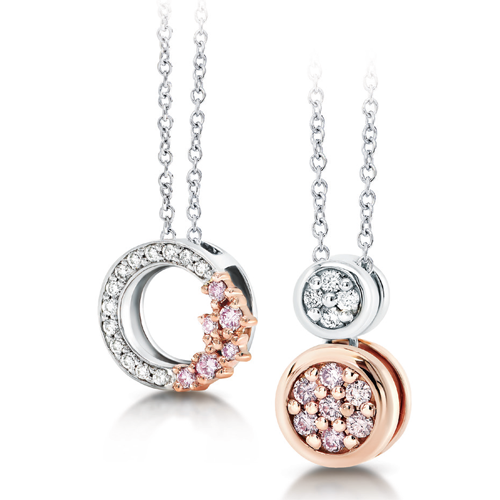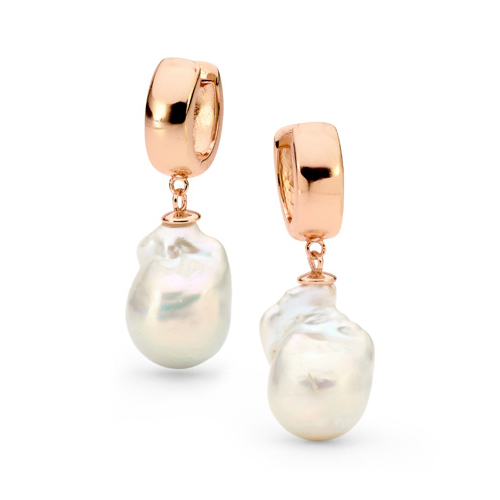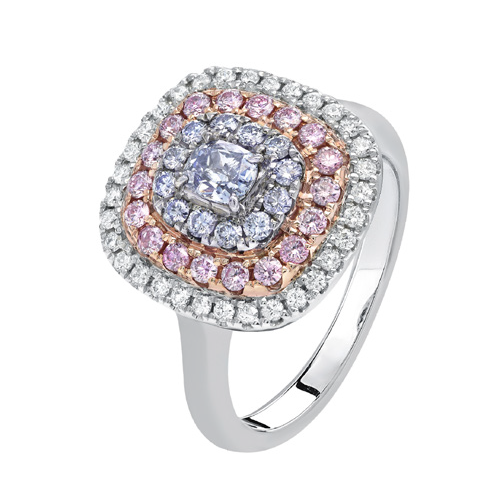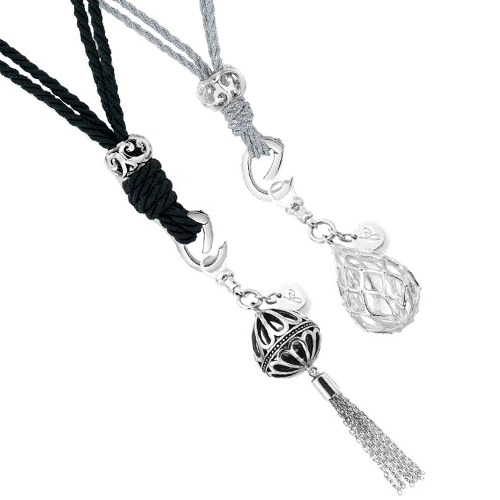Whether to stock branded jewellery is a decision every retail jeweller must consider. If so, how much of one’s inventory should brands occupy and what are the right brands to stock?
There are many factors in play in this decision, including price and margin, brand image and marketing, and supplier support. There’s also the matter of trust – newer brands don’t have the same prestige or built-in customer base as well-established, international brands.
But there are major positives to stocking a variety of branded jewellery and various ways to overcome the misgivings retailers might have about embracing this category.
Phil Edwards, managing director at Duraflex Group Australia, which supplies Thomas Sabo and Ania Haie, says, “Branded jewellery comes with much more than just the product itself. It should come with the complete story, from point-of-sale (POS), packaging, marketing material and even social-media content. Ideally a branded product should be bringing consumers to the retailer’s door with its own brand awareness.”
Frédéric Brunel Acquaviva, vice-president of sales at Renaissance Luxury Group, says, “A brand identity is not only about the product itself, but the whole universe that the brand has to offer. Retailers worldwide are struggling with in-store traffic; they are struggling to differentiate from other stores and to compete with e-commerce. “
“They need to create a memorable shopping experience for the consumer by having real and true storytelling – a creative, unique and emotional message that encourages the consumer to come back often.”
Renaissance developed the Les Georgettes By Altesse range, which was first introduced to the French market in 2015 before expanding overseas, as a unique product offering which is not only eye-catching and colourful, but also customisable. This means consumers will keep coming back to purchase the interchangeable elements.
One benefit for retailers is that suppliers heavily support brands by building brand awareness, managing distribution lines and providing retailers with the right tools to promote the product.
“The brand debate has been going on for years,” Helen Thompson-Carter, director of Fabuleux Vous, explains. “The critical thing for any brand is to ensure they are constantly evolving with design and presentation. Retailers now are wanting to feel the love from suppliers and suppliers have had to become a lot more flexible in their approach and offering.”
Tried and true
It’s hard to establish a brand and even harder to see it grow and thrive over time. Retailers must know what they seek in a brand, what it takes to make that brand succeed and how to get the brand mix right in their retail stores.
Edwards says there are many reasons retailers might hesitate to stock a brand: “Will it actually sell? How many nearby competitor stores may discount the brand? What’s the minimum buy-in or investment? How will the brand be supported and marketed? Is it a trend or a long-term investment? Are the staff actually engaged with the brand and willing to drive sales?”
The majority of these concerns can be addressed by choosing a bigger, more established brand.
Steve Der Bedrossian is CEO of SAMS Group, which has established the Pink Kimberley Diamonds and Blush Pink Diamonds brands. While they were started in 2008 and 2014 respectively, SAMS Group has a long history. “The benefit to retailers is working with a company that has been around for more than 50 years in the jewellery and watch trade,” he says.
Brunel Acquaviva describes the support for retailers of Les Georgettes By Altesse as “a 360-degree plan offered each season which brings together marketing, communication and merchandising tools to promote the brand and increase sales in the best way”.
For many retailers, the decision to stock a brand is contingent on one thing: its ability to get customers through the door. Simply put, bigger, more established brands have name recognition and a built-in market, as well as the budget to promote the brand to consumers.
Der Bedrossian says, “Our award-winning creative designs are easy to sell due to our market research and pre-selection. We have brand recognition and a lot to offer, with both on-trend and classic designs.”
Bevan Hill, business manager at Jewellery By Design in Townsville, Queensland, says, “We stock well-known brands such as Adina, Najo, Swarovski, Ikecho, Australian Chocolate Diamonds and Pink Kimberley. We find that there is already brand recognition within the community, which makes selling the items much easier as customers already feel connected to a brand from what they have seen in the media and feel more compelled to purchase those items over non-branded.”
The other advantage is that buying and wearing well-known brands makes consumers feel on-trend, with a certain social cache attached.
“A well-known brand gives the customer a confidence in their purchase – not only because there is a perception of quality in that item but also because customers like to feel that they are wearing something that is fashionable and trendy,” Rachel Vellacott, director of Jamies Jewellers in Central Otago and Queenstown, New Zealand, explains. “Especially to younger customers, we sell a lot of certain styles because friends are wearing that piece or wearing that brand.”
Timesupply distributes Nomination, Coeur de Lion and Dansk Smykkekunst, all of which were founded between 1971 and 1987. Managing director Ken Abbott puts the continuing popularity of these brands down to “timeless designs” as well as passion, innovation and high-quality craftsmanship. That pedigree continues to appeal to consumers year after year.
For the last two years, Timesupply has distributed German brand Qudo, which was founded comparatively recently in 2009. Receiving a very positive reception from local retailers, Abbott says the brand’s philosophy – “to inspire and excite jewellery lovers with clever and innovative ideas using the latest technologies and creative elements” – has been a key selling point.
Similarly, Ikecho was founded 20 years ago and continues to keep customers intrigued.
“We have two seasonal collections per year and I think customers like that we are always keeping on trend with pearl designs,” Erica Miller, founder and director of Ikecho, says. She adds that her biggest challenge over the years has been finding consistently high-quality pearls to use in her designs, as it’s the commitment to exceptional gems that’s sustained her brand.
When it comes to merchandising, established brands can offer clear guides and support with stock presentation and sales techniques.
“In 1999, we started off slowly with a small amount of POS, strut cards and packaging,” Miller explains, “then we brought in our core pearl studs on stands, as well as earrings and pendant stands with the logo. This worked well in-store. We then introduced window displays in two different sizes.”
Many international brands have marketing teams that tailor content to specific markets and increase brand awareness among consumers. They may also appoint international celebrity ambassadors.
“Well-established brands tend to have expert backing with dedicated teams who constantly update their product ranges while investing in marketing to let customers know what’s on offer,” Pranay Parekh, manager of Springfield Jewellers in Springfield, Queensland, explains.
Indeed, SAMS Group established Blush Pink in order to make rare and expensive Argyle pink diamonds more accessible to a wider range of consumers. “Blush Pink features fancy light pinks, more pave-style settings and a smaller price tag,” Der Bedrossian explains.
Recently, brands have been embracing social media and digital marketing to target younger consumers, generating word-of-mouth and building their brand stories.
“Facebook and Instagram play a big part nowadays for branding,” Miller says, adding that Ikecho’s website has been revamped three times over the years and has a great e-commerce offering that funnels sales to retailers through a ‘click and collect’ function. “We’re always making improvements to our site,” she adds.
In the digital realm, Thomas Sabo and Ania Haie have country-specific websites and have also embraced influencer marketing, forming partnerships with social-media stars from the US, UK and Europe.
Have you experienced challenges in establishing a jewellery brand?
 “Our market research showed that more than 65 per cent of retailers only wanted to stock what was tried, tested and true. There were only five to 15 per cent of retailers – who we referred to as the ‘innovators’ – that were very keen to give something new a go, and they were critical to getting the brand up and running.” – Helen Thompson-Carter, director Fabuleux Vous “Our market research showed that more than 65 per cent of retailers only wanted to stock what was tried, tested and true. There were only five to 15 per cent of retailers – who we referred to as the ‘innovators’ – that were very keen to give something new a go, and they were critical to getting the brand up and running.” – Helen Thompson-Carter, director Fabuleux Vous
 “Initially retailers wanted to still weigh the branded sterling silver product [from Thomas Sabo] and convert to a cost per gram – clearly not a relevant option for a branded product that has so many other features and elements to the story!” – Phil Edwards, managing director Duraflex Group Australia “Initially retailers wanted to still weigh the branded sterling silver product [from Thomas Sabo] and convert to a cost per gram – clearly not a relevant option for a branded product that has so many other features and elements to the story!” – Phil Edwards, managing director Duraflex Group Australia
 “As with any new brand, there are many hurdles that need to be overcome. Low brand awareness is always a significant challenge – brand awareness is needed to gain the retailers’ trust as well as the confidence of the end customer.” – Frédéric Brunel Acquaviva, vice-president of sales Renaissance Luxury Group “As with any new brand, there are many hurdles that need to be overcome. Low brand awareness is always a significant challenge – brand awareness is needed to gain the retailers’ trust as well as the confidence of the end customer.” – Frédéric Brunel Acquaviva, vice-president of sales Renaissance Luxury Group
|
Small and mighty
From a practical perspective, the supplier for a larger brand will generally have strong existing infrastructure and support staff on hand to assist retailers; however, there are some drawbacks.
Simply put, the more well-known the brand, the more likely it is that multiple stores in the same area will stock the range. This can dilute sales and erode a retailer’s point of difference. “It can be limiting,” Miller says of retail oversupply. “In a small town, there should really only be one retailer that stocks that brand.”
That’s where smaller and younger brands come in.
“Depending on who your target market is as a retailer, brands will bring consumers to the store but they can also have an adverse effect – those consumers who don’t want to be like everyone else could bypass that store,” Fabuleux Vous founder Thompson-Carter says.
There can also be problems for retailers when a larger brand decides to change direction. A recent example is Pandora’s restructure, which has seen it withdraw from third-party distribution both in Australia and around the world.
As many as 100 Australian accounts were closed in 2018, with reports of back orders not being honoured and widespread stock liquidation; this damaged the reputation of retailers as well as their relationship with loyal customers.
Retailers can also become too reliant on branded products and displays, neglecting their own sales techniques and merchandising skills and assuming that customers already know what they want.
While seeming like a risk at first, stocking younger brands can pay off in the long-term. Flexibility is the key with small local brands able to offer lower buy-ins, a deeper understanding of the different factors and customer needs in the local market, and more freedom with sales, packaging, marketing and merchandising.
“Smaller brands do all the things that big brands do, but are nimble in changing design direction with much care and attention,” Thompson- Carter explains.
“I have seen a shift from retailers wanting everything from smaller brands to wanting the choice to integrate product into their own store’s story versus the brand’s story,” she adds, noting that many retailers have confessed to feeling like the identity of their stores had been overwhelmed by a large brand’s display.
Meanwhile, Brunel Acquaviva notes, “Today, customers are turning to niche brands which put more emphasis on producing quality products that reflect the consumer’s personal sense of style.”
The brand mix
There are both benefits and challenges to stocking larger, mature brands and smaller, younger ones. The right brand mix is crucial.
Springfield Jewellers stocks 12 per cent branded jewellery. “Since we relocated to our new premises in November 2015, we have stocked Nikki Lissoni and Thomas Sabo as well as Pink Kimberley,” Parekh explains.
“We stock branded jewellery to ensure we offer our customers a full range of jewellery products. While we specialise in custom-made jewellery and workshop-related services, branded jewellery fills a huge potential gap in our retail offering.”
Vellacott has been building the brand offering of both her stores over the last six years and the ratio is now at 38 per cent branded jewellery. She says that brands “give your customers a certain degree of confidence in the store – they can provide a sense of comfort and help entice customers into the shop where they can see our other products.”
Vellacott advises other retailers to “do more research and ask more questions” before deciding whether to bring in a new brand. “I think there is a risk in stocking unproven brands – there seems to be a fairly large buy-in for new products that then don’t offer the support and back-up that they promise,” she says. “We are a little more wary of promises that some brands make!”
Jewellery By Design has stocked brands since opening 13 years ago. “Approximately 40 per cent of our current range is branded jewellery,” Hill says, adding, “It’s important to consider if a brand is a good fit for current customers or if there has been demand that may bring in new customers. While it is important to stock a well-known, high-quality brand, it is also important to consider that brand’s after-service care and how they interact with their retailers.”
Meanwhile, Parekh notes, “Most brands invest in product development ensuring their newest releases are in line with the latest fashion trends. Products are backed up with quality finishing, a decent warranty and after-sales care, all of which builds trust.”
When deciding whether to stock branded jewellery, there are many factors to consider. Retailers should choose carefully but not be too timid to experiment. By carefully selecting brands that match well with a store’s customer base and offer plenty of support, retailers can attract new customers and boost sales.
BRANDED JEWELLERY
 |  |  |
Above: Sams Group Australia | Above: Ikecho Pearls | Above: Sams Group Australia |
 |  |  |
Above: Fabuleux Vous | Above: Ikecho Pearls | Above: Fabuleux Vous |